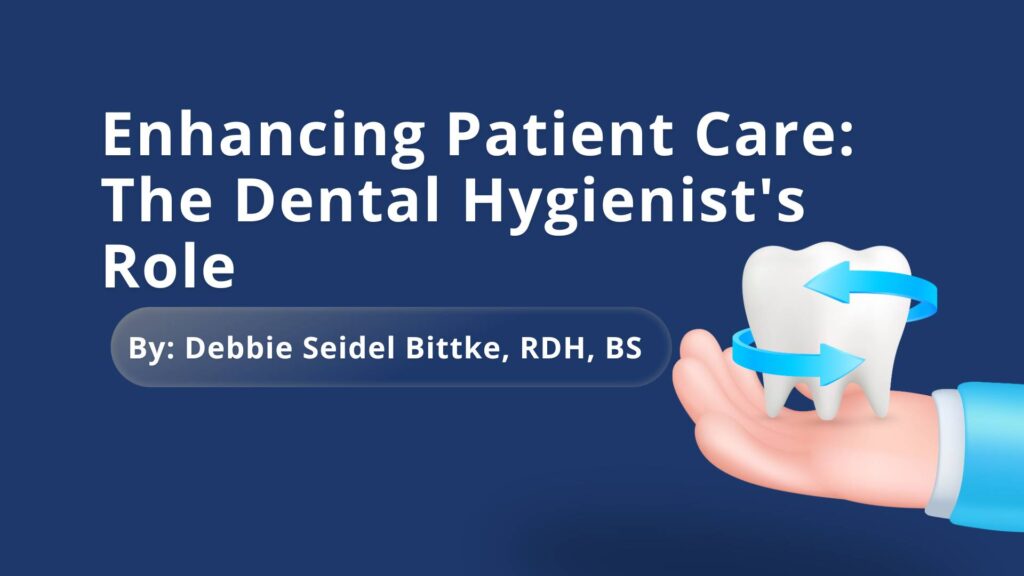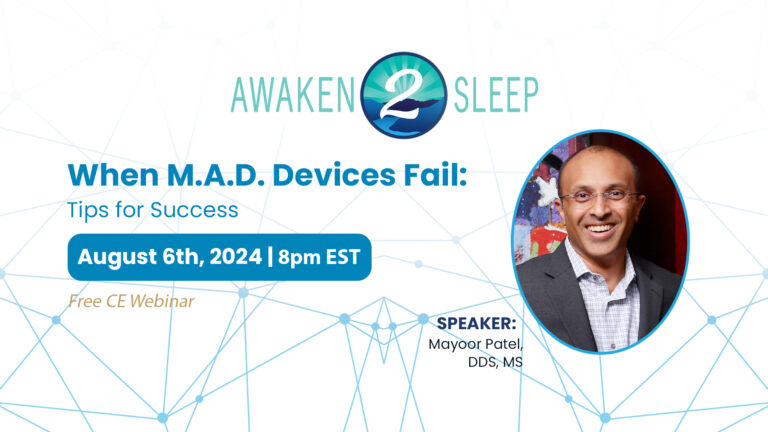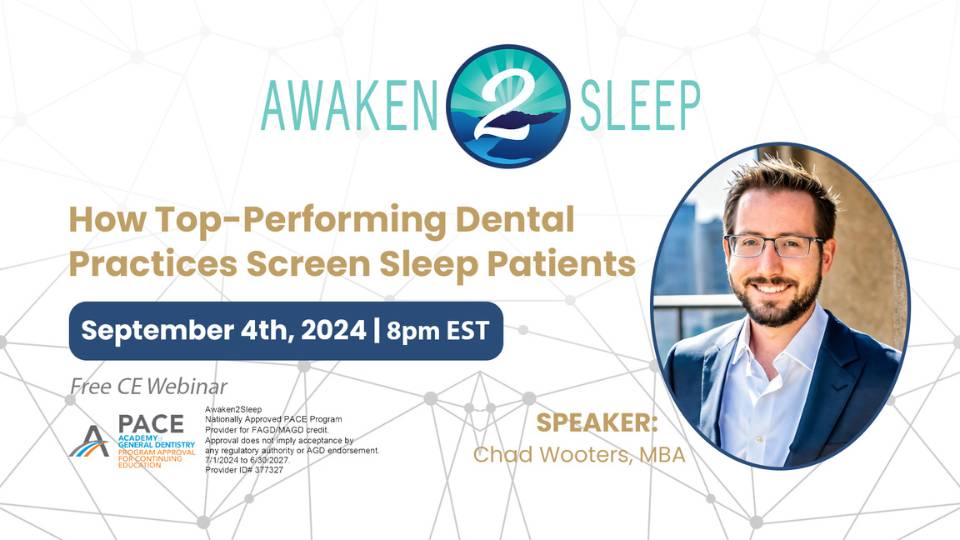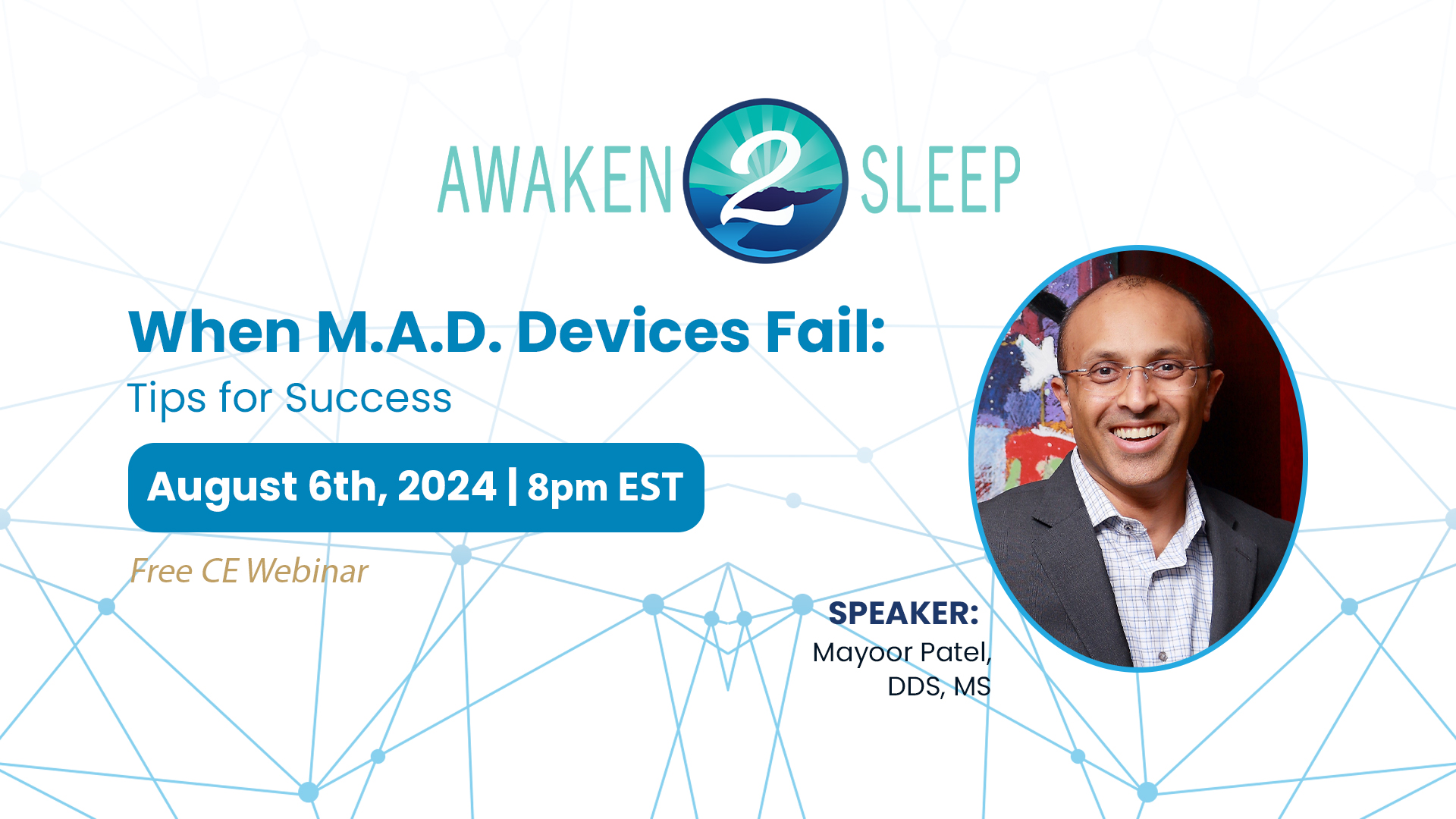Enhancing Patient Care: The Dental Hygienists Role to Boost Case Acceptance
The field of dentistry has evolved significantly over the years, expanding beyond traditional oral health concerns to encompass broader aspects of overall well-being. Dental professionals have come to realize the interconnectedness of oral health with conditions like sleep apnea and oral inflammation that can affect a patient’s overall health.
In this context, dental hygienists have emerged as integral players in the early identification and treatment of such cases, offering patients a holistic approach to oral care. This article explores how dental hygienists are taking actionable steps to enroll patients into sleep apnea and various dental treatments, emphasizing the key benefits of the patient-clinician partnership.
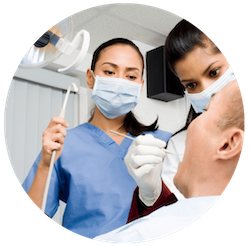
The First Line of Patient Interaction
Dental hygienists are often the first point of contact for patients during dental appointments. Their unique position provides them with the opportunity to interact closely with patients, gather essential information, and perform preliminary assessments. This initial interaction is crucial in identifying potential cases of sleep apnea and cosmetic dental concerns.
By engaging patients in meaningful conversations and asking specific questions, dental hygienists can gather valuable information about symptoms like snoring, excessive daytime fatigue, difficulty in breathing, and the list goes on and on regarding various oral conditions that affect a patient’s total health.
Visual Exams: Unveil the Hidden
One of the distinct advantages of dental hygienists is their ability to conduct comprehensive visual examinations of patients’ oral health. In the case of sleep apnea, signs such as a narrow airway, enlarged tonsils, or a receding jaw can often be observed during these exams.
Additionally, dental hygienists are skilled at identifying dental issues that could potentially lead to cosmetic concerns, such as misaligned teeth, stained enamel, or gaps between teeth and most importantly are hygienists identifying oral inflammation; gingivitis and periodontitis.

Our overarching message as dental professionals should be:
“Optimal oral health leads to a longer, healthier life!”
The Dental Professional - Patient Partnership
Dental hygienists can establish a unique partnership with patients by involving them in the examination process. Through the use of intraoral cameras, scanners such as iTero, and even a patient looking in a mirror, the dental hygienist can show patients a real-time view of the inside of their mouth.
These visual aids empower patients to understand their oral health conditions, enabling them to see the issues that might have otherwise gone unnoticed. By actively involving patients in the examination process, dental hygienists foster a sense of ownership over their oral health, leading to increased patient engagement and compliance.
Dental professionals can more easily get patients to “own their disease” and “want what they need” because of the upgrade in technology available today.

Patient Education: Empowerment through Knowledge
One of the primary benefits of dental hygienists’ involvement in diagnosing sleep apnea, gingivitis, periodontitis, and cosmetic dental cases is patient education. With their in-depth understanding of oral health and related concerns, dental hygienists can explain complex concepts in a clear and relatable manner.

Similarly, for cosmetic dental cases, dental hygienists can discuss the aesthetic and functional benefits of various treatment options, helping patients make informed decisions.
Seamless Transition During the Hygiene Patient - Doctor Exam
By the time the dentist arrives to complete the hygiene patient examination, a strong foundation has already been laid by the dental hygienist.
The patient is now equipped with knowledge about their oral health condition, potential concerns, and available treatment options. This seamless transition from the dental hygienist to the dentist ensures that the patient is well-prepared to engage in a productive conversation with the doctor.
Imagine you are at a party and another individual comes and stands next to you as you are chatting with a friend at the party. Do you ignore the person who is now standing next to you?
Absolutely not!
Don’t you bring them into the conversation? Of course you do!
This is the same thing that will happen during the hygiene patient – doctor exam.
Once the doctor enters to complete the patient exam, the hygienist moves out of their chair and now the dental hygienist will guide doctor through:
- Rapport. The hygienist let’s doctor know something fun or personal about the patient.
- Informs doctor about any medical changes, oral abnormality screenings (oral cancer and perio exam) completed.
- Is there a chief complaint?
- Were x–rays taken? Does the patient need x-rays at their NV?
- Did the hygienist and patient discuss unscheduled treatment?
- Did the patient and hygienist look at any discolored teeth, worn out fillings, crowns, open margins, cracked teeth or fillings, etc., etc.? Is there gingival inflammation?
- What did the hygienist explain to the patient about necessary gum treatment? Examples: Gingivitis, Gross debridement, “Gum Therapy” (SRP), etc.
- What does the patient need to return for? Example: Preventive care, hygiene appointment in six months or “Gum Therapy” asap.
Note: the words above you will use with your patient are words they understand. Using words such as cleaning de-value the dental hygiene appointment. Using words like “B” instead of saying the word “Bleeding” makes a big difference to have the patient “own their disease!” True story about a hygienist who said, “B” not “Bleeding.” Use the phrases “Gum therapy” instead of Periodontal Disease. Say, “Hole_____”. Say where the tooth is located.
Words have power and they will paint the picture of exactly what is happening in your patient’s mouth!
Elevate Patient Consent and Compliance
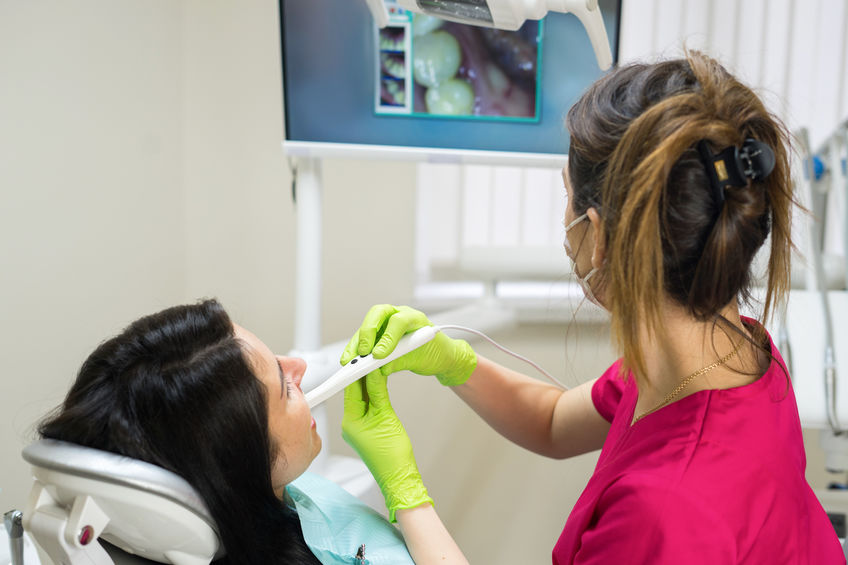
When patients have a clear understanding of their oral health conditions, they are more likely to accept your care. The suggestion of words listed above will help patients understand their oral care needs. When patients have a clear understanding what what they need they are more likely to “own their disease” and want to pay and schedule for necessary care.
This increased transparency contributes to higher patient compliance rates, as patients recognize the importance of addressing sleep apnea or cosmetic dental concerns promptly.
Additionally, patients are more likely to follow through with your recommended treatment when they have actively participated in the diagnosis process.
Think “Partnership” when communicating with your patients.
Imagine they are your spouse or a colleague with whom you are discussing an important business strategy and you are both attempting to win a contract for a million dollars! Imagine your patient is a VIP business colleague and you have a million dollars at stake!
Holistic Patient-Centered Care
The collaborative efforts of dental hygienists and dentists promote a patient-centered approach to overall wellness for your patients. This approach considers not only immediate dental issues but also the broader implications for a patient’s total health. By addressing sleep apnea, airway abnormalities, gingivitis, periodontitis and cosmetic dental concerns, dental professionals can significantly enhance a patient’s quality of life, confidence, and their total health.
This approach helps patients save money in the long-term and creates a longer-healthier life!
Conclusion
The role of dental hygienists in diagnosing sleep apnea, oral inflammatory diseases and cosmetic dental cases is a transformative aspect of modern dentistry.
This approach helps patients save money in the long-term and creates a longer-healthier life!
Dental hygienists’ efforts not only enhance patient education and empower patients to embrace optimal oral health but hygienists also contribute to higher patient care and improve case acceptance.

By prioritizing a holistic patient-centered approach, dental hygienists are driving positive changes in the field of dentistry, ensuring that patients receive comprehensive care that goes beyond the confines of the oral cavity and “cleaning teeth.”
Reference.
- “Studying the Link Between Gum Disease and Alzheimer’s Disease.” Studying the Link Between Gum Disease and Alzheimer’s Disease, Tufts University, July 12, 2022 July 2022. https://neurosciencenews.com/alzheimers-gum-disease-21018/.
Accessed on August 15, 2023.
About Debbie Seidel Bittke, RDH, BS
Debbie Seidel Bittke, RDH BS, is founder of Dental Practice Solutions. She is a distinguished dental hygienist, hygiene department coach, and the visionary behind the creation of Celebrity Smiles Club. This innovative patient rewards and loyalty system was designed to propel dental practices to new heights by fostering patient loyalty and retention.

With her expertise, Debbie has revolutionized the way dental practices grow and thrive, keeping patients engaged and returning for optimal oral health. Debbie created a patient growth strategy using this one thing. This one thing will grow your dental practice in many areas and your dental hygienist is the best person to implement this one thing. Grab your free eBook and grow your dental practice. Click here.

